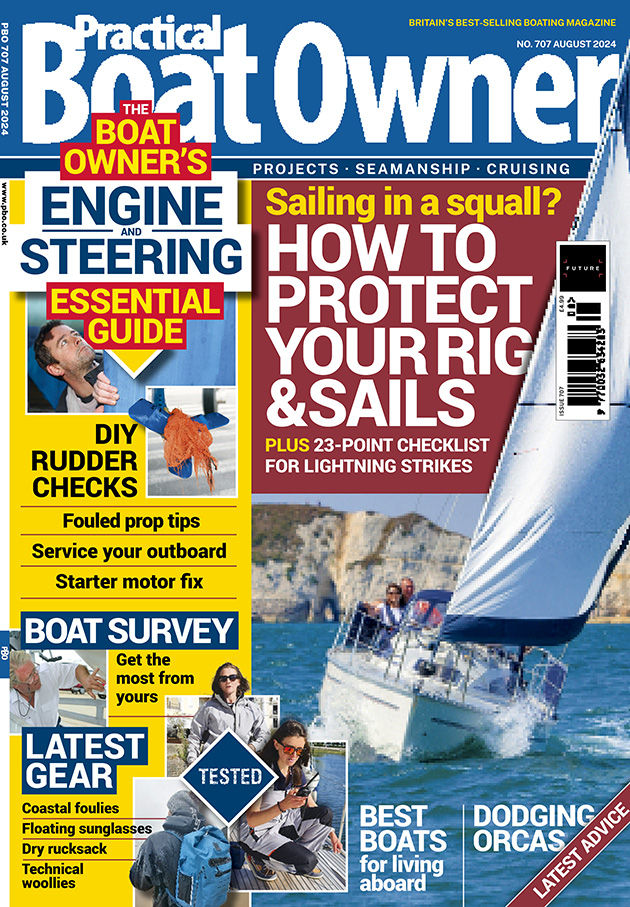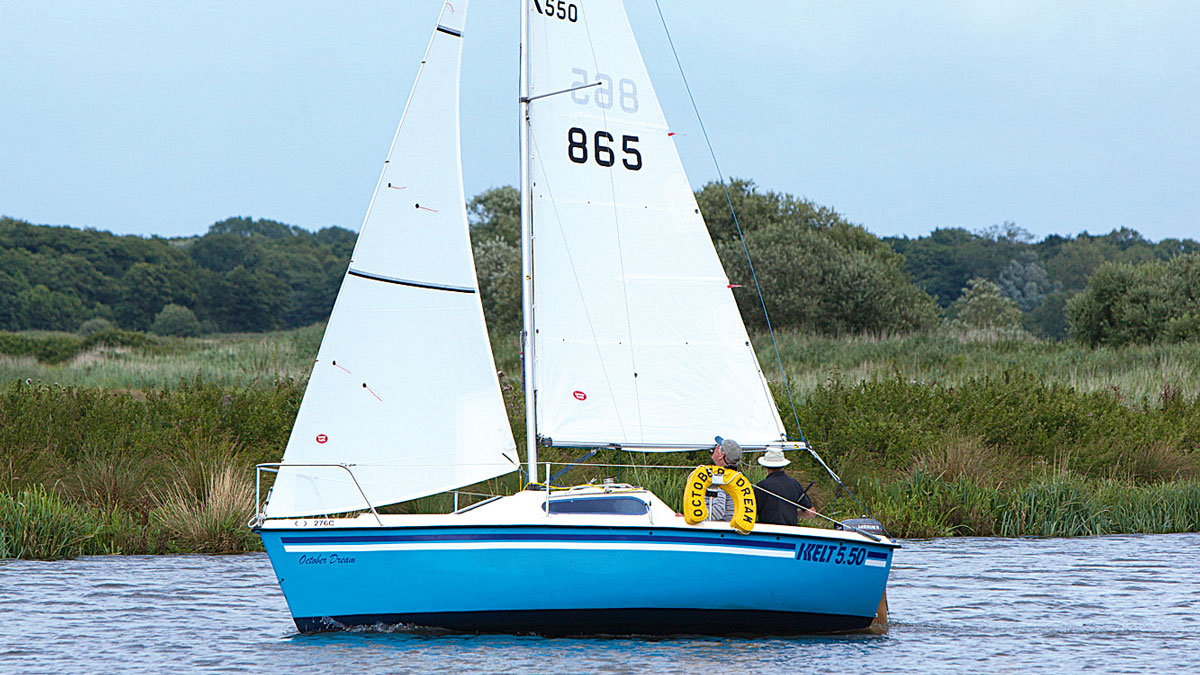David Holmes reflects on the success of his simple boom brake
I recently installed a DIY boom brake on my Westerly Merlin – a Kong figure-of-eight aluminium descender, appropriated from the world of rock climbing for the princely sum of £8.95 from ebay, writes David Holmes.
I looked at various boom brakes on the market, many had good reviews and most had eye-watering price tags.
There’s often confusion between the role of a boom brake and a preventer. They’re actually complementary to each other, but carry out different roles.
The preventer is essentially a length of rope that extends from the end of the boom, goes forward to the bow, and then back to the cockpit. Its primary function is to prevent the boom from gybing, and it’s especially useful during long offshore passages when sailing downwind.
By securing the boom and preventing it from swinging uncontrollably, the preventer acts as a crucial safety measure.
It’s simple, reliable, tried and tested.
The boom brake
A boom brake works in the opposite manner.
In this situation, you are actually intending to gybe, so the boom brake’s purpose is to take the energy out of the boom as it swings across.
It soaks this energy up by adding a lot of friction.
This prevents the boom from slamming over to the opposite side and avoids any abrupt impact which could damage the boat or injure the crew.
While my boom brake is a work in progress, it has been effective in improving the safety and control of the boat during gybes as well as enhancing the light air performance.

The Kong climbing descender in use. Note the preventer safely stored under the boom. Credit: David Holmes
In the research phase, the basic figure-of-eight-style boom brake appeared to receive the least favourable reviews and comments in terms of its effectiveness.
One concern is that the loops around the ‘8’ can slip upwards and become jammed.
Another valid concern is its lack of suitability for larger boats.
To set up mine, I started by tying off a line on the port midship cleat.
This line then runs through the boom brake (which is attached to a fitting on the boom) and consists of two turns where the friction occurs.
From there, the line extends to a block on the starboard midship cleat, loops back around a jam cleat, and finally returns to a self-tailing winch in the cockpit.
Tightening the line is crucial for the boom brake to function effectively, as it adds friction around the fitting to absorb the energy.
If the line isn’t tight, the boom brake doesn’t really do anything. It’s just idle.
But once tightened, the brake adds a lot of friction, increasing its energy-absorbing capabilities.
With an inexpensive figure-of-eight descender, I can easily adjust the friction by making either one or two loops around the figure-of-eight.
Initially, one loop wasn’t providing enough friction, so I added an additional loop to the figure-of-eight, and by increasing the thickness of the control line from 8mm to 10mm, I achieved the desired level of resistance.
After experimenting, I found that using a self-tailing winch was necessary to get the right amount of tension into the system.
I also used a rope with plenty of ‘tooth’, rather than the original, smoother braid-on-braid.
Boom break pros
One of the primary advantages is the ability to gybe safely even in stronger winds.
The boom brake mitigates the risk of the boom swinging uncontrollably, which allows for more precisely controlled gybes.
A boom brake proves invaluable during light wind conditions when the boom tends to flop around.

A tight control line is essential to create friction. Credit: David Holmes
By setting the brake and adding the right amount of friction, the boom remains stable on the desired side.
An additional bonus is that applying the boom brake while motoring with the main up helps to keep the boom under control.
Also, to avoid banging our heads on the boom when anchored, we’d unclip the mainsheet and attach it to the pushpit.
The boom brake does this job much more conveniently now.
Boom brake cons
I left the boom brake permanently rigged, and that does mean more lines on the deck, increasing potential hazards, particularly as the lines cut across the deck at shin height.
There is a potential for jamming as the control line can ride up the figure-of-eight – though this hasn’t been a problem for me yet.
When not in use the boom brake control line has to be slack, but there can still be a little friction in the system.
At times it was necessary to push the boom out by hand for the last few inches, rather than wait for wind pressure to oblige.
Once fully released, the tension is gone and normal boom function returns.
The Kong descender at 34kg/N was suitable for my 28ft 6in boat, but for boats over 30ft this could be a little undersized and something offering higher friction might be necessary.
I’ll continue to modify and improve my DIY setup as I learn through experience.
However, I know that my humble boom brake will now be a permanent fixture on our boat.
Continues below…
Jimmy Cornell: How I’ve learned to fix my own problems at sea
Cruising doyen Jimmy Cornell shares 50 years of lateral thinking from his first hull fit out to what he stows…
Broaching on a boat and how to prevent it
When the breeze picks up, how do you stop your boat taking charge and going where it wants? David Harding…
Sailing to windward: how to tweak your sails to improve performance
Some boats need persuasion to make to windward, so tweaking the sails to best advantage can make all the difference.…
The changes I made to my boat to get it to tack properly
Following a second visit to a Kelt 550 suffering from upwind reluctance, David Harding outlines the changes made to the…
For more boating news, features and expert advice, take out a PBO subscription

A subscription to Practical Boat Owner magazine costs around 40% less than the cover price.
Print and digital editions are available through Magazines Direct – where you can also find the latest deals.
PBO is packed with information to help you get the most from boat ownership – whether sail or power.
-
-
-
- Take your DIY skills to the next level with trusted advice on boat maintenance and repairs
- Impartial in-depth gear reviews
- Practical cruising tips for making the most of your time afloat
-
-
Follow us on Facebook, Instagram, TikTok and Twitter








